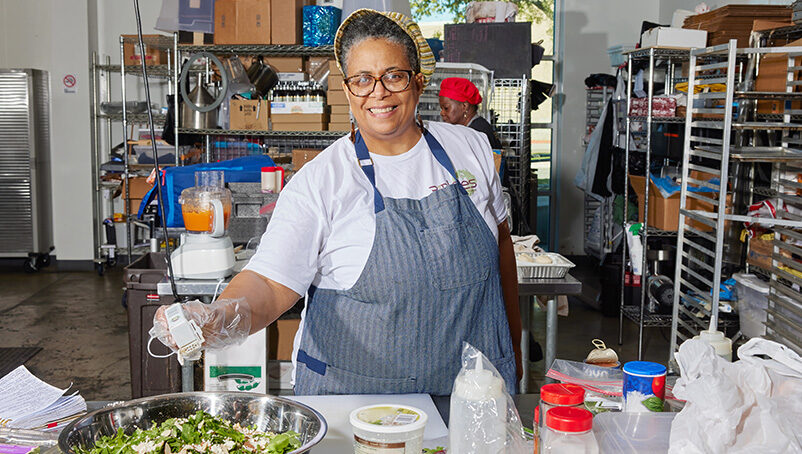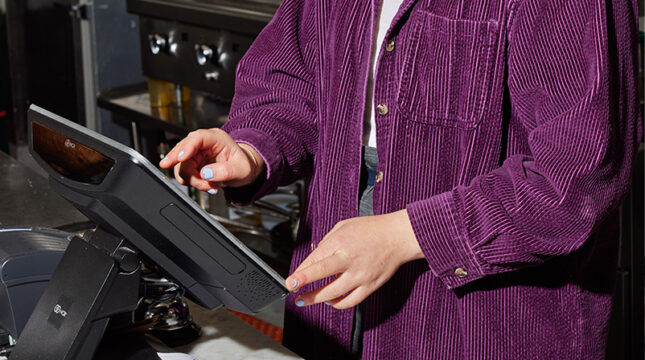Restaurants handle a lot of money from individual customers throughout the day. They’re also spending on supplies and food costs constantly. Managing money can get overwhelming and time-consuming very quickly.
That’s why it’s essential to put strong bookkeeping and accounting systems in place before you open your doors. Solid restaurant accounting will help your eatery become and stay a successful business.
While there are many restaurant accounting solutions, it’s important for you to understand restaurant accounting basics and how it applies to your business.
Basic restaurant accounting terms
You might think that small restaurant accounting is different from larger ones, but the essentials are identical even if the volumes are different.
Here are a few restaurant accounting terms and concepts you should know:
Bookkeeping vs. accounting
While these terms are often used interchangeably, they’re not the same.
Technically, restaurant bookkeeping refers to recording and managing your day-to-day financial transactions such as purchases, daily sales, receipts and payments.
Accounting is more about analyzing and interpreting that data. Accountants oversee your general ledger, crunch the numbers and handle taxes.
Of course, a single person can do both of these functions. Many new restaurant owners manage their own bookkeeping and work with a certified public accountant (CPA) at tax time.
Restaurant accounting periods or accounting cycles
This period of time covers your financial statements and allows you to compare performance over time. Most businesses set up monthly accounting periods, but many restaurants prefer to set up weekly periods to account for the uneven number of weekend days each month.
Instead, a popular choice is to set up 13 accounting periods of four weeks per year. This is referred to as the 4/4/5 method:
- You divide a year into four quarters of 13 weeks.
- The 13 weeks are grouped as two 4-week months + one 5-week month, ensuring the same number of days each period.
Cash accounting vs. accrual accounting
These are two common accounting methods. Each method has its pros and cons, so you can decide what’s right for your business.
Cash accounting is what it sounds like: you only record revenue and expenses when cash transactions have occurred. This is the simpler accounting method and might be better when starting.
Accruals accounting allows you to record revenue before receiving payment for your goods or services and record expenses before the restaurant has paid for them. While more complex, this method gives you a more accurate view of your business’s health. It’s often better in the long run for inventory-heavy businesses.
Chart of accounts
This is a listing of the “accounts” related to your business. It should give an accountant a rough bird’s eye view of what’s involved in your operations in terms of sales and costs. Typical account types include revenue, expenses, liabilities, assets and equity.
Inventory management
Your inventory includes all the ingredients and supplies needed to create your dishes and present them to diners. Inventory management is the process of determining how much of each item needs to be available for each shift, using products before they spoil and reordering as necessary.
Orders, invoices and receipts
The sales process is filled with important documentation. Your customers order food, your waitstaff typically enters it into a point-of-sale system and you present customers with invoices in the form of “checks” or “bills.” You then create receipts that serve as proof of payment.
There is also a separate chain with your vendors in which you place orders, receive and pay invoices and are issued receipts.
Balance sheet
Liabilities + Owners Equity = Assets. This basic accounting equation documents your assets in one column and your liabilities in another.
- Assets: Everything your restaurant owns, from cash to inventory to investments.
- Liabilities: What the restaurant owes, from its mortgage or rent to its credit card debt and outstanding debts to vendors.
- Equity: A measure of your restaurant’s net worth.
Cash flow financial statements
Your cash flow statement lists every dollar that your restaurant earns, such as from serving meals, and every dollar spent, such as on inventory. This financial reporting helps you manage your cash flow, understand problems, find efficiencies and keep an eye on your restaurant’s financial health.
Income statement
Your income statement is concerned only with money coming into your restaurant. You may have operating income, which comes from your regular business activities such as dine-in meals and catering, and non-operating income, which comes from sources such as investments.
TIP: Because restaurant accounting is so complex, it’s best to meet with an accounting firm or tax attorney at least once per year to go over your books. Always seek professional advice if any questions or concerns come up throughout the year.
What about accounting for restaurant tips?
Accounting for restaurant tips can be somewhat confusing due to complex IRS guidelines.
Essentially, any automatic gratuity or service charge (i.e., for big parties) is considered restaurant revenue. This is because the customer didn't determine the amount — it was required. When the staff receives these payments, they are considered wages and are subject to withholding.
However, tips left to the customer's discretion are different. These are considered employee income rather than wages and aren't included in a restaurant's revenue. Employees are required by law to report them, and they are fully taxable, but they aren't subject to withholding.
Why use restaurant accounting software and tools?
Accounting for a small restaurant business can be complex, but it doesn't have to be overwhelming. Most restaurants today use a digital point-of-sale system (POS). Some POS accepts credit and debit payments and does a lot of the bookkeeping and accounting tasks, from tracking inventory to analyzing sales data.
It's generally best to pair your POS system with a dedicated software-based restaurant accounting system for more robust coverage. Today's accounting software, such as Quickbooks, can help you track your profit margins, generate instant sales reports and loss statements, help you make informed data-based decisions, improve your budgeting and stay in compliance with the IRS.
Aside from keeping you informed of the big picture, accounting solutions help automate daily tasks within the accounting process. Super helpful for small business owners who never seem to have enough time. Software can link to your business bank account, act as accounts payable or receivable, take care of payroll (and payroll taxes) and more.
TIP: Check out our post for more information about how digital tools can help you automate and run your business.
Additional business essentials to track in restaurant accounting
Typically, restaurant accounting falls into four categories: cost of goods sold (CoGS), labor costs, property or occupancy expenses and restaurant operations. Be sure to track all of these operating expenses to get a full picture of your bottom line.
Restaurant laws and regulations
Restaurant industry laws and regulations cover everything from food handling safety to maximum occupancy to alcohol sales. Failure to comply can result in stiff penalties.
All the costs associated with regulations and compliance should get tracked. These might include business license payments, permit renewals, food handlers licenses and training and more need to be included in your books.
Insurance
Business insurance is vital to your success when opening a restaurant. Without it, you’re open to lawsuits when things go wrong.
Whether a server accidentally spills soup all over a customer’s expensive purse or someone slips on your floor when the entrance is wet from rain, restaurant insurance can protect your small business. Be sure to account for and budget insurance in your books.
Marketing
Successful restaurants can attract and retain customers by developing a marketing plan. Determine who your target diners are and how you can reach them.
Some marketing efforts are low or no cost, such as printing flyers or posting on social media. Other efforts take a little more dollars, like participating in a food festival or buying a radio advertising spot.
Either way, you’ll want to account for your marketing efforts, so you determine how to allocate funds.
How NEXT helps restaurants thrive
Restaurant accounting can be complex, but knowing some basic information helps you gain confidence. NEXT Insurance does the same thing, but with business insurance. We take something that seems complex and make it simpler and easy to understand.
At NEXT, we offer customizable, affordable insurance for food and beverage businesses to keep your cash flow healthy. We’re fully online, so restaurateurs get a quote, choose a policy and get their certificate of insurance in a process that could take less than 10 minutes.
Our team of licensed, U.S.-based insurance professionals are ready to answer your questions.






